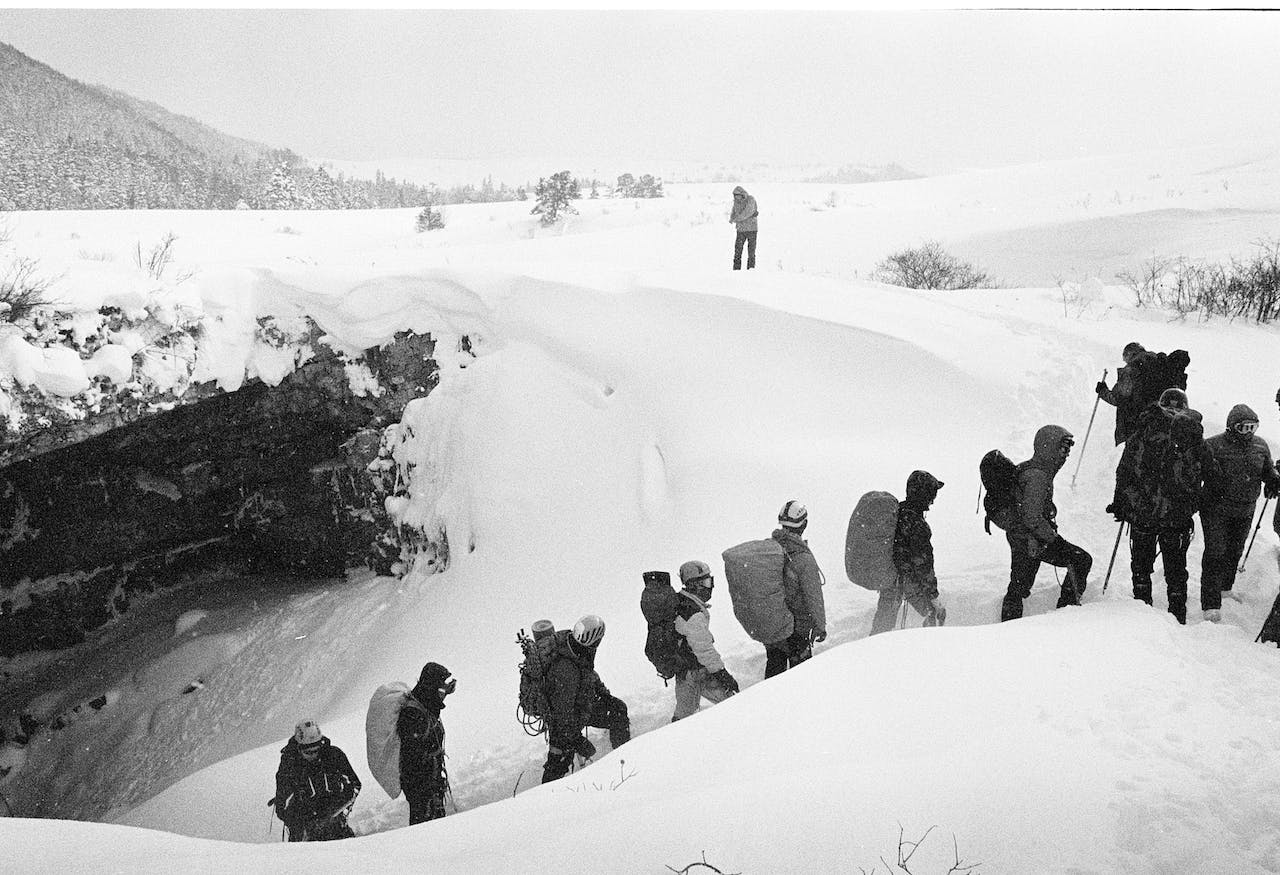Psychological safety is the notion of providing ease and safety in the work place even in the depths of conflict. It’s an idea that promotes dialogue and energizes productive outcome and change. It’s feeling safe in your work environment and feeling safe enough to express yourself, your thoughts, pitches and also be able to feel safe enough to offer critical feedback in hopes of an inevitable resolution or coming to terms with the problem.

Tom Geraghty shares his journey from ecological research to technology and his realization of the importance of psychological safety in creating thriving teams. He discusses the negative effects of fear-based leadership and the discovery of psychological safety as a concept. Tom explains the traditional approach to fear in the workplace and highlights Amy Edmondson’s research on psychological safety. He emphasizes the need to reward group success over individual success and the importance of moving authority to where the knowledge is. Tom also discusses the qualities of a good boss and the challenges in implementing psychological safety.

Takeaways From My Conversation On Psychological Safety
- Psychological safety is the belief that the group you’re in is safe for interpersonal risk-taking.
- Fear-based leadership hinders team performance and prevents individuals from admitting mistakes or raising concerns.
- Rewarding group success over individual success fosters psychological safety and leads to better outcomes.
- Moving authority to where the knowledge is empowers individuals to make decisions and act quickly.
- Creating psychological safety requires embracing discomfort, being open to feedback, and reframing work as a learning opportunity.
My Exchange With Tom
Sue
Hi there today on the show we have got Tom Garrity here with us all the way from the UK. I’m so honored and delighted to have you here. Welcome to the show Tom.
Tom
Thank you so much Sue, it’s lovely to be here.
Sue
Oh, I cannot wait to get into your story and the remarkable work you do. You are the founder of psych safety.com psychological safety. I want to get into this, but you know, you it’s interesting your transition here because you initially with your career, it seems like you do so much and you’ve done so much and then you kind of transitioned more into this world, focusing on psychological safety and building teams around that. So give us the backstory on how this all came about for you.
Tom
Yeah, so most of my career has been in tech, in technology, and in fact I started my career in ecological research. got a degree in ecology and had a brief career in ecological research before moving into technology. And yeah, I was working in operations and sort of engineering and infrastructure and stuff as a as a sysadmin and then began managing teams, scaling up and managing engineering teams, operations teams, software engineering teams, and became really passionate about or and really interested in creating the conditions in which these teams could thrive. And I didn’t. I didn’t have all the skills to do that at the time. And at one point I got a job as a senior infrastructure engineer and moved into and got a promotion. But yeah, a job working as a senior infrastructure engineer for a large company who, my boss was the sort of stereotypical. screamy shouty vein pulsing on his forehead kind of kind of boss. Big open plan office, fancy glass cubicle in the corner for the boss and he and he would storm out every now and then seemingly at will and just rip someone apart for some minor infractional mistake or something and in front of everyone just rip them apart. And he so that he was leading by fear. He is his intention was to was to make everyone. Fearful of making mistakes. And so I should I should point out this sounds like I’m making him out to be really nasty person. He thought he was doing the right thing like he was trying to create a high-performing team and he believed that was the mechanism by which that would be achieved.
What I could see was that was having a really horrible effect on the team and holding everyone back. No one wanted to do anything. No one could take any chances or raise any concerns. Certainly not admit your mistakes. And if we did anything, we’d have to plan just everything just to have weeks and create piles and piles of plans just so we had something to cover us if we did make a mistake. And so I realised that, and this really held the company back and it was really making the company suffer, and that was when I realised that was the bad way of doing things, that didn’t lead to good results, and it was a horrible place to be, like no one wants to work in a place like that. So I wanted to do the opposite of that and that’s what I tried to do, I just didn’t have the language, I didn’t know what that was called, and it was only many years later on that I came across the term psychological safety. And that for me was like the actual light bulb moment, like a light bulb flashing above my head moment of, this is the word I’ve been hunting for. This is what I’ve been trying to do all along. So, and that’s what, yeah. And that’s when I started to talk about psychological safety. That’s when I had the language to like hang the practices and the things I was trying to do on this concept. And that’s when I was able to. to actually talk about it and start trying to help other people do the same thing.
Sue
So I think this is so remarkable, Tom, because you know, so often I think so many people, corporations, companies go through this and they just struggle along. No one is actively trying to figure out a more powerful way to do it. And I just commend you for figuring out, wait, okay, there’s got to be a better way. I mean, you guys are working on infrastructure. and like these huge undertakings and how can you do that in a stressful space? And I think for him missing that, right? And you figuring that out. So what did that look like for you? So then did you go train and learn and how did that all kind of unfold?
Tom
Yeah, so that’s a good question because I think and the training point is actually a really interesting point because Throughout the entire let’s say 20th century, you know from Ford building cars to Taylor And everything up to pretty much up to this point We’ve been taught that we get the most out of people if they’re a bit afraid if they’re a bit afraid of of making a mistake because we don’t want people to make mistakes, so we should punish mistakes, right? That’s kind of the logic that flows. We get a bit more out of people if they’re a bit afraid of losing their jobs, if they don’t come up to scratch. And we get more out of people if they’re afraid of annoying the boss or making the boss cross. And in some contexts for a short while, that can work. Like we can get people to do a job if they’re afraid of failing to do the job. But not for long. Like that doesn’t lead to long-term success. Either because people burn out or they leave or in fact what we find is that, and so this is where the concept of psychological safety actually comes from, Amy Edmondson back in the late 90s was clinical teams and what she found, I’ll cut the story short, but what she found was that the highest performing teams on paper were making more mistakes than the lower performing teams. And that didn’t make sense, right? That doesn’t make sense. Why would the high performing teams be making more mistakes? And what it turned out to be was that the high performing teams were actually admitting their mistakes and talking about their mistakes. and having the conversations by which they could make improvements and learn from them and prevent them happening in the future. So there’s this weird sort of inverse correlation between our willingness to talk about mistakes and accept that they might happen and things actually going wrong in the real world. What happens a lot of the time in a lot of organizations is that the bosses who have
Tom
will punish mistakes or come down hard on mistakes. And so they hear less about mistakes. They see fewer mistakes and they think, well, that’s working. But what’s actually going on is that they’re just hearing about fewer mistakes. The same mistakes are happening, if not more mistakes. They’re just being kept hidden until they’re too big to hide, until they blow up in someone’s face. And so that’s also why we see A lot of disasters, in fact, almost any big disaster that you can think of, from Chernobyl to Challenger to the global financial crisis, has somewhere at its core, a lack of psychological safety where people didn’t feel safe to speak up and raise their concern or say, guys, is this sure this is a good idea, this subprime thing? And, and you know, and so if people felt just a bit safer to say those things and raise their concerns and go against the status quo a little bit in organizations, then we might not have had all these, all these big disasters. And to your training point, up until really like now, there really is, it really has been very little. training or even awareness of this idea up until the last couple of years really. It’s been a very niche idea up until now.
Sue
And now, can you tell us, can you define psychological safety and tell us, like, what are the components? What does it entail?
Tom
Yeah, so psychological safety is the belief that the group you’re in is safe for interpersonal risk taking. That’s a bit academic and wordy. So you can also think of it as the belief that you will not be punished or humiliated for speaking up with ideas, questions, concerns or mistakes. So we can suggest new ideas. We can raise concerns about something that’s going on or the way that something is happening. We can admit our mistakes and we can do that without fear that we’ll be laughed at or humiliated or somehow punished for doing so. And that punishment might take it could take various forms like losing your bonus or being sacked or just or as small but still important as sort of being excluded from the group or you know or having your boss sigh and shrug their shoulders go You know, that sort of thing. So all of these little micro, micro interactions and the macro things, they’re all important. Yeah, so interpersonal risk taking.
Sue
And now, Tom, so this is something that really has to start like from the top down, right? It has to be implemented and then kind of set that precedence by leaders in an organization.
Tom
It does. And this is in fact, this is the really interesting thing. The you know, we say that culture is the shadow of the CEO and the leadership sets the tone of the organization and things like that. And that’s absolutely right. We we it’s very difficult to foster widespread psychological safety in an organization that is run by someone that doesn’t believe in it, for example. However, there are things we can do. We can take a bit of control over our own direct environments. If we’re a member of a team, we can begin to foster psychological safety in that team, and we’ll probably feel a degree of psychological safety in that team already, but we can do more. We can always do more. We can always do a bit better, and we can champion it outside our teams and try and espouse it within wider organization. But… Yeah, we’re always going to hit some sort of ceiling, some sort of wall, unless that senior leadership is really on board and really gets it.
Sue
And so what is the kind of, if there’s one thing that generally tends to contribute to a breakdown or what is kind of like the biggest issue if there’s just, if there’s one, right, that a lot of times contributes to a lack of psychological safety in an organization?
Tom
So one thing I’m trying to think, so there are lots of different things, but there’s, um, do you know, I would say if there’s one thing, probably one thing that I see most commonly is, is an approach in organizations that rewards individual success over group or team success. Because if we’re rewarding individuals for their performance, and particularly in environments where there’s scarcity or competition, where, for example, if you’ve got a sales team and there’s only, let’s say you’ve got a sales team and there’s only 50 leads to go round, then that’s scarcity. And what it means is that one salesperson could, could win could beat their teammates, supposed teammates by actually stealing a sale off them, taking their clients off them, taking that lead. And, and that it’s kind of almost sounds obvious, but one salesperson isn’t going to admit a mistake or ask for help. from another member of the team, team in quotes, because they’ll be afraid that person’s going to steal their client off them or their lead off them. And so those sorts of environments, we might frame as, we won’t think of that as a sales team, but actually it’s not. It’s a bunch of people who are competing against each other. And those sorts of environments lead to behaviors and lead to environments don’t feel psychologically safe. And yet that’s a very common way in organisations that, again, we’ve learned through the past century or so that drives performance, right? That out of those, out of those sort of gladiatorial adversarial environments, come the victors and the cream rises to the top or all those sorts of things. But it doesn’t actually work. In fact, what we see
Tom
And what we’ve seen with some of our clients is that if we begin to reward group behaviour, so group outcomes over individual success, the individuals, at an individual level, we might, we might not perform quite so highly. We might not have those rock stars in making the big bucks, but overall we’re more successful. And it makes absolutely sense. If you think of a sports team, if we rewarded every football player who scored a touchdown, but sacked everyone that didn’t after a game, we’d be left with three players in a very poorly performing team. It’s teamwork, it’s the glue in the teamwork and psychological safety within the team that holds people together and leads to great outcomes.
Sue
This is so interesting. See, we never think of this, but this is giving me this insight now where, like you say so often, it’s kind of structured on outwardly like, oh, this is a team, but really, you know, there is always that one like top performer, top producer, right? And he or she is the one who’s getting all of the praise, all of the bonuses, you know, all of that. So what Give us like a metaphorical example of how, like you say, for example, if there’s not enough leads, right, there’s 10 people and there’s only nine leads, what is, like, what would be the powerful way of fostering safety in that sort of scenario?
Tom
Yeah, so what if we think about what we’re trying to encourage here is people working together to the best potential outcome. And again, it’s this strange conundrum, this strange counter-intuitive aspect that if we acknowledge the risk of failure, then we’re actually more likely to succeed or achieve even better results. And again, you see this in high performing sports where if we punish failure, if we punish failure, then people are likely to wind back just a little bit, hold back from really striving that far because striving just that little bit too far maybe risks that failure. And so, And we see the same effect in teams. What we’re trying to do is encourage the behaviour where teams will work together and help each other. And what we’re trying to encourage is, for example, someone on the team helping out someone else, say, turn around that $5 million sale, when in fact it might mean them losing traction on a $1 million sale. But the… And so in that old, old model of, of sort of the adversarial competitive spirit, um, you wouldn’t, you wouldn’t help out your teammate if it means that you’re going to potentially lose out or not, you know, not be able to spend that time on your client. But for the team, for the organization, that’s the better thing to do. And so we need to reframe what we’re trying to do as what’s best for the team, what’s best for the group, what achieves our greatest outcome together. And beginning to reward some of these glue behaviors, some of these behaviors that glue the team together, that help each other perform on the team. In fact, there might be someone on the team who never makes their own sale, but they help everyone else on a team get 10 times better. So if we use the old traditional metrics, the simple metrics, that’s the poorest performing person on the team, but actually they’re contributing more than anyone else to the team’s success.
Sue
And so because this is like a mindset thing, how do people, how do you help them reframe and see it as not a me, me and okay, there’s power in the us.
Tom
Yeah, yeah, so and I think you’ve nailed it really, because it’s a lot of this comes down to power and thinking about the way that power flows in organizations and Mary Parker Follett, in fact, talked about this. She was one of the first and most insightful organizational dynamics thinkers back in the early 20th century, but her writings were largely ignored because she was a woman writing at a time when women weren’t really expected to speak about these sorts of things. Mary Parker Follett talked about power over power to power for these different types of power. So many conventional Western, particularly organizations, we people get promoted and we strive people in organizations strive to gain more power and often that’s power over other people, to command what people do, to make decisions about parts of the organization. And that doesn’t actually lend itself to great performance. If we’ve reframed power as something that we can provide to people and distribute effectively within the organization. provide the power to those people that need it, which tends to be the frontline, the sharp end, the doing end of the organization. They need the power to make decisions quickly. They need the power to act fast. They need the power to change the way things are done. for the best outcome for the organization. But that requires people who have gained power in the organization to relinquish some of it, right? And that’s a really hard thing to do. We tend not to dismantle the scaffolds upon which we’ve been elevated to stand on. But that’s exactly what we’re asking people to do in this reframing, this re-architecting of organizations.
Sue
So what can you give us an insight here? Like for, I mean, how that’s done, especially for like a leader or someone who’s needs power or holds power and isn’t necessarily using it in a powerful way.
Tom
Good question. So one nice, quite neat way of thinking about this is from, this is actually from David Marquet, who wrote a book called Turn the Ship Around. And he talks about moving authority to where the knowledge is. So if we think about where the knowledge sits in a team or in an organisation, and that, by that, I mean the knowledge about how to get something done, how to… how to build some software, how to provide a health care or medical treatment to a patient, or how to put out a fire, or whatever it is those people are doing, give as much authority as we can to the people with that knowledge, because they’re the people who can make best use of that authority, they’re the people who are best placed to make those decisions and move fast. And it’s hard work in an organization to move knowledge to where the authority is. And this is what happens a lot when teams or people who need to act quickly and make decisions and achieve great things, but instead they have to escalate decisions of a hierarchy or ask for permission to do something. By doing so, we need to pass knowledge back up this chain of command and stuff. We need to we need to give our bosses like here’s a here’s a cost benefit analysis or here’s a return on investment document. And here’s all the numbers and here’s the research we’ve done. Can we can we go ahead and do this thing? And yeah, sure, like we’re not I’m not suggesting you give authority to people at the front line to go and purchase another organization or something like that, but And this is where we need to have honest conversation about how much authority we can transfer. But moving authority to where the knowledge is, is our aim and always trying to move that back. And we find if
so as a manager, as a leader, if you find that people are coming to you asking questions, asking for permission, or giving you information in exchange for a decision, that’s probably an opportunity to move some authority to the people who are trying to communicate that to you. Sue (23:01.393)
So I would imagine you’ve got to be coming up against ego and a lack of humility with this, right? Because you want to move the, you said you want to move the authority to where the knowledge is, because it’s almost impossible to move the knowledge to where the authority is, right? That’s kind of, it’s just, a lot of times it’s one or the other.
Tom
Thank you. Yeah.
Yes, exactly. Yeah, yeah, exactly that. Exactly. And yeah, an ego, ego comes into it hugely because we were human and most of us, particularly those of us who particularly those of us, I’m including myself in that who have been promoted into management and senior exec roles in organizations. it’s a nice feeling to have that power of decision making and authority and strategic oversight and things like that. It’s good, it’s fun, we like it. So it feels very discomforting, very uncomfortable to relinquish that power and move it back. I keep nearly saying down the organization, I don’t really like it. using up and down in that sense, but to the front of the organisation, I’m going to say instead, the managers and leaders should be at the back, not the top. And so, yeah, we do come up against ego and power and all those things.
Sue
Now, Tom, what about somebody who’s in an organization? What is your advice or guidance? If you’re in an organization and you don’t feel the safety, you don’t feel safe speaking up, you don’t feel safe sharing, you see a problem that you’re afraid to bring to, you know, your boss’s attention, what is the advice there for something like that?
Tom
Yeah, so this is this is this is tricky and I think we um it’s not always possible for people in that position to do anything and we so we have to recognize it again as well so for speaking up particularly speaking up to power let’s say um highlighting a problem to your boss For some people, the stakes are higher than for others. You know, for someone who’s worked their way up, for someone who’s come from a fairly socioeconomically deprived background, they’ve worked incredibly hard, they’ve got into debt to get themselves through college, they’ve done internships, and they’re just on the line of making it. the risk for them speaking up is far, far greater than someone who’s got a nice economic cushion behind them, but of a safety net, a job offer waiting in the sidelines and things like that. So, yeah, the stakes are higher for some than others in respect to speaking up in organisations. So sometimes it’s just not possible for that person And I, all, you know, maybe there are cases where maybe you, you know, if, if you can make alliances and allegiances within your organisation, maybe you can build a collective voice with your colleagues, with your peers, which, which can help collate that power together. So it can be easier to, to begin speaking up and we can begin to create that, that momentum, that wave of, of change. through a bit of a ground swell of coming together. And this is where sometimes it can be powerful to do it from the ground up rather than from the top down. But it’s certainly not easy. And one of the challenges with psychological safety is that we can’t just say to people, just. just speak up, just do it, just admit your mistake, just raise that concern because it’s not always safe. We’ve seen in healthcare systems in the UK and in the US where people have spoken up with concerns or mistakes, they’ve lost their jobs. So we know it’s not always safe, but we do know that we can, particularly if we’re in leadership or positions of power. we can begin to create this environment where people do feel safer to speak up with those concerns and mistakes. And we have a duty to do so really.
Sue
And now for, you know, what makes a good boss? Like, what are the few qualities that make up a good leader, supervisor, who’s also fostering psychological safety?
Tom
Oh, so that’s, so that’s, you know, that’s a really good question. I, um, the qualities of a good boss, I would say, I mean, humility, you mentioned humility before I think humility really, really comes to the forefront here. I mean, you know, we need, we need capability. We need to, we need to understand our role, the environment, the challenges, the strategic. marketplace we’re in. We need to understand all that work. We need to be good at our jobs, but we also need to be able to say, I don’t know, tell me the answer. Or let’s find out, let’s go find out together. What do you think? When someone asks, what should we do boss? What do you think we should do? Or have you got any ideas? We should be ready to accept or at least discuss on incomplete ideas. We should actually, yeah, you know, this phrase, you know, this phrase don’t come to me with problems, come to me with solutions. Have you ever heard that? Have you ever heard a boss say that? Yeah, that’s like. I had a manager say that to me and I’m pretty sure I’ve said it to people in the past, but on reflection that’s not a good message to say to someone. To say to someone, don’t tell me problems, only tell me when you’ve come up with a solution to it, means that we actually won’t hear about the problems that they can’t think of a solution to, or they’re not in a position to understand the problem fully, or they’ve got a a bit of a solution, but it’s not quite finished yet because they can’t, they’re not positioned to join all the dots. And so we should be positioning ourselves and we should be using language that says, no, tell me about the problems. I’d love to hear any solutions you’ve got, but tell me about the problems too, because we want to hear about them as soon as we can. So that’s the sort of.
It’s hard to sort of put that into a set of characteristics for a manager, but that’s the sort of behavior, the sort of language that I see really high performing managers or rather managers of really high performing teams, uh, demonstrating.
Sue
And you know, this is so interesting because ultimately, it’s that takes that kind of level of comfort to be able to sit with the problems, right? Be comfortable enough to have someone bring that to you without fear of, oh, you don’t want to hear it or let’s just pretend it like it’s not happening.
Tom
Yeah, yeah, exactly, exactly. This and this is it. It’s about comfort. The so one of the reasons I love psychological safety is because so much of it is counterintuitive. So much of this is counterintuitive to what we to what we’re trained to think and what we’ve learned all our lives. The a lot of psychological safety for leadership for people in management and leadership positions is about getting comfortable being uncomfortable. getting comfortable being challenged, getting comfortable with people telling you they think you’re wrong. And they can think of a better way of doing it or an alternative way or they’ve got a concern that they need to raise with you. Or they can or they’d like to give you some feedback and help you improve in your role. Like I genuinely don’t see that many managers and leaders really embracing that sort of approach. I see some, I see a few really fantastic managers and leaders doing that well. And it’s, yeah, it is about being comfortable. In discomfort, in being challenged, and that’s one of the reasons we get quite a lot of, we sometimes get so pushed back at a sort of leadership. push back and I say we like we I say we are by we I mean us as the population of the world yeah we try and engender these more generative psychologically safe environments but they can feel very challenging to people who are used to not being challenged and are used to not being given feedback
Sue
Tom, what does, can you, so tell us like going from an unhealthy organization where there isn’t safety, psychological safety to one that kind of turns that corner and starts implementing some of the strategies and things that you suggest, what are some of those steps? Like what are some of the key things that start getting implemented to start, you know, everyone kind of working better, performing better. What does that look like?
Tom
Yes, this is a good question. I think step one step one is really simple. Step one is just talk about psychological safety. Like in a strange sort of meta way, we need to make psychological safety a safe thing to talk about at work. And and also engender a true understanding of the term. It doesn’t mean it doesn’t mean sort of being soft or overly nice, and it doesn’t mean hiding or turning away from conflict. Often it means it can in fact mean more conflict, but it means it means productive energizing conflict that we can come away from and think that was worthwhile. We made a good decision that we got to the right point. So first of all is yeah talk about psychological safety, have conversations about psychological safety, make psychological safety a just a day-to-day normal thing to talk about in your meetings. in your in your one-to-ones and all of that stuff. So yeah talk about psychological safety. The second thing is to reframe work. The outcome of work shouldn’t just be delivering the thing or making the sale or building the thing. It should be learning how to do it even better next time. It’s not to say that we’re lowering standards, we’re actually raising standards, we’re making sure that everything we do is a learning opportunity. And every time we do something, we accept that it might fail. We don’t want it to. We want to we want to perform and excel as far as we can. But we accept that it might fail and. whether it’s a success or a failure, we’re going to learn from it and do it even better next time. That’s a genuine, it’s actually quite difficult to do in day-to-day work when, again, so many of our metrics, our incentives, our world is based around achievement and always achieving, you know, right first time, do it right, do it well, never fail, failure is a dirty word sort of thing. And actually if we can talk about failure and embrace the potential for it and the fact that we learn from it as well as success, we’re less likely to fail in the long run. We’re more likely to succeed again and again and again and iteratively improve. So yeah, yeah.
Sue
Wow, powerful insights there, Tom. Now, is there an organization, what would be the one thing, if any, that would keep it from, like, not being able to thrive? Like, what is, is that a scenario that happens where you just can’t help somebody?
Tom
Um, I don’t think, I don’t think there is anything. I, I think just as in, in any space.
We almost always fit, there is always a degree of psychological safety. I don’t think we’re ever at full zero. So. We’ve always we’ve always got capacity to improve as well. We there’s always some little step we can take. And. And whether that’s, you know, that might mean creating a bit of a coalition inside your organization. It might mean it might be as simple as getting a coach or a mentor outside the organisation so that you’ve got someone to lean on and reflect on and sound off on, so you can come back to work feeling refreshed and a bit more energised. I don’t think any organisation or any team is beyond hope.
There’s certainly some organisations have a little bit more work to do than others.
Sue
Oh my goodness, I love that. Okay, so a couple of things, Tom. Well first I want to know what’s, so what is like going on with you personally? What does that look like? So you’re consulting, working with the organizations day to day, things are growing. Give us that. What is that like?
Tom
Wow, yeah, so we, honestly, I love my job. I genuinely love my job. So we work with organizations all over the world in all sorts of different domains. We work with healthcare organizations, with the NHS in the UK, and we work with healthcare organizations in the US, and also we work with the WHO. We work with aviation organizations. We work with manufacturing and… academia and heavy industry and utilities. And what I find amazing is that everyone in every organization, there are pockets and there are practices of excellence and people doing amazing things. And what I love is that we’re able, we go into these organizations where we help people learn new ways of doing things, new ways of behaving, new ways of communicating, different ways of doing things, improving the ways that we communicate and act together. and we learn as much from our clients as they do from us, I think, and we can then take those learnings, take those ideas into other organizations where there isn’t normally this cross-pollination of ideas and practices, and that’s what’s so interesting about what we do. It’s this cross-pollination and the different contexts and domains that we work in, and yeah, I genuinely love it.
Sue
Well, I can tell you love it and you are so passionate and kind of embody the lessons that you’re teaching. You know, you really, I can sense and feel that you believe so strongly in the power of what you’re doing and implementing. And I think it’s so remarkable that you’re working with the top organizations in the world. So that’s kind of setting a precedence for other, you know, organizations and companies and things. to have an example or role models to look up to. Wow, what an amazing, fascinating conversation, Tom. I just, first and foremost, I’m gonna have links to all of your stuff for people so they can get in touch. I will have those links. And I just wanna thank you so much. I’m so honored to have had this time with you and thank you for all of your amazing, powerful insights.
Tom
Thank you so much. It’s been a really, really lovely time. It was fantastic to meet you. I’ve really enjoyed that and yeah, I really appreciate it. Really appreciate it.
Sue
I appreciate it, Tom. Now in closing, if there were just one message, your hope for everybody, what is that closing message you wanna leave us with?
Tom
Oh well, so I think back to the back to the learning from work. I think make everything an experiment My first job title was experimentalist I was I was I was an experimentalist in a research station and I’ve kind of kept that through me through my career so I Like to identify as an experimentalist and I think we should treat everything like an experiment. We should learn from everything we do
Sue I love that. That is such a beautiful closing message. You’ve been so wonderful, Tom. Thank you so much.
Tom
Thank you. Thank you.
Sue
Thank you. Wow, that was awesome.
Chapters
00:00 Introduction and Background
01:00 Transition into Technology Career
02:21 Negative Experience with Fear-Based Leadership
03:44 Discovery of Psychological Safety
05:05 Traditional Approach to Fear in the Workplace
06:30 Amy Edmondson’s Research on Psychological Safety
07:24 Consequences of Lack of Psychological Safety
08:39 Lack of Training and Awareness on Psychological Safety
09:01 Definition of Psychological Safety
10:34 Rewarding Group Success over Individual Success
12:08 Moving Authority to Where the Knowledge Is
15:44 Encouraging Productive Conflict and Collaboration
18:09 Power Dynamics and Psychological Safety
20:47 Qualities of a Good Boss
23:21 Challenges in Implementing Psychological Safety
25:23 Speaking Up to Power and Stakes Involved
26:48 Creating Change from the Ground Up
28:09 Characteristics of a Good Boss
30:59 Comfort with Discomfort and Being Challenged
33:13 Steps to Foster Psychological Safety
36:03 Continuous Improvement and Cross-Pollination of Ideas
39:54 Closing Remarks
For more from the Blossom Your Awesome Podcast click here.


































































































































































































































































